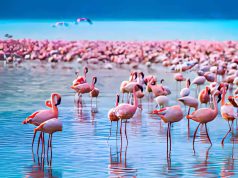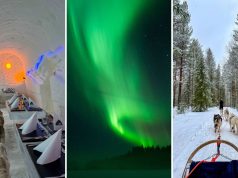Kenya is a vast and captivating country, like a pearl enclosed within an oyster, waiting to be opened and explored.
While most travelers focus on Kenya’s famous game reserves — and rightly so — there are lesser-known destinations that hold their own unique charm. Two of these hidden treasures are Lake Baringo and Lake Bogoria, neighboring lakes in the Great Rift Valley that offer completely different experiences despite their proximity.
This guide focuses on both lakes — helping you understand their contrasts, their beauty, and how to make the most of your visit.
Here’s an overview:
Lake Baringo vs. Lake Bogoria — What’s the Difference?
Lake Baringo is a freshwater lake, one of the few in Kenya’s Rift Valley. It’s an important ecosystem supporting fish, crocodiles, hippos, and hundreds of bird species. The surrounding landscape has a warm, savannah-like feel, dotted with acacia trees and home to the Kalenjin community, particularly the Njemps (Il Chamus) people, who live and fish around its shores. Baringo is ideal for boat safaris, birdwatching, and peaceful retreats by the water.
Lake Bogoria, just south of Baringo, offers a contrasting experience. It’s a saline (alkaline) lake famous for its spectacular hot springs, steaming geysers, and large populations of lesser flamingos that feed on its algae. The lake lies within the Lake Bogoria National Reserve, a protected area that combines geothermal activity with impressive birdlife and scenic escarpments — perfect for photography, short hikes, and game viewing.
So while Baringo provides life and activity on the water, Bogoria dazzles with drama and color on its shores.
Related read: How to Plan the Perfect Day Trip to Lake Nakuru

How to Get to Lake Bogoria
There are two ways to get to Lake Bogoria.
By Road
Lake Bogoria is situated approximately 250 kilometers north of Nairobi, and the most common way to get there is by road. The drive typically takes 5 to 6 hours, depending on traffic and road conditions. From Nairobi, you can take the A104 highway through Nakuru, then turn off at Eldama Ravine or Mogotio towards Marigat, the nearest town to Lake Bogoria National Reserve.
If you’re using a private vehicle, a 4×4 is highly recommended, especially during the rainy season when the roads leading to the lake can become rough and muddy. You’ll also want to fuel up and carry enough water and snacks, as amenities can be limited along the way.
Nearby Airports
If you prefer flying, the nearest airport is Eldoret International Airport. From the airport, you would need to continue by road to Lake Bogoria, which could take 2 to 3 hours depending on the route. However, the drive to the lake is scenic and worth the time.

What to Do at Lake Bogoria
Lake Bogoria is scenic and also has things you can explore, some of which are listed below.
Explore the Hot Springs and Geysers
One of the lake’s most captivating features is its natural hot springs and steaming geysers. These geothermal wonders can be found along the lake’s shores, particularly on the western side. Be sure to walk carefully around these areas, as the ground can be unstable and the water temperatures dangerously high.
This is also a perfect photography spot, especially during sunrise when the steam rises dramatically against the morning light.
Bird Watching and Flamingo Viewing
Lake Bogoria is often called the flamingo capital of the world thanks to the lesser and greater flamingos that flock to its alkaline waters. This makes it a birdwatcher’s paradise, with over 300 bird species other than flamingoes recorded in the area.
Bring a pair of binoculars and a good camera to capture the spectacle. The best time for flamingo viewing is during the dry seasons (January to March and June to October), when water levels are favorable for the birds.

Game Viewing in Lake Bogoria National Reserve
Though Lake Bogoria is primarily known for its birds and geothermal activity, the Lake Bogoria National Reserve is also home to a variety of wildlife. Expect to see greater kudu, impalas, warthogs, baboons, and even leopards if you’re lucky.
You can take a self-drive safari through the reserve or hire a local guide to help you spot animals and explain the area’s unique ecology.
Visit the Kesubo Swamp
Adjacent to the lake is the Kesubo Swamp, a lush wetland area that supports diverse birdlife and serves as a critical breeding ground. This is a less-touristy spot that offers a quieter, more immersive experience in nature. It’s ideal for serious birders and nature lovers.
The Endorois people, the indigenous community living around Lake Bogoria, offer authentic cultural tours. These include visits to traditional homesteads, storytelling sessions, and opportunities to learn about their history and struggle for land rights. It’s a meaningful way to connect with the human side of the landscape and support local livelihoods.
Things to Keep in Mind When Visiting Lake Bogoria
Entry Fees and Park Regulations
The Baringo County government manages Lake Bogoria National Reserve, and there is an entry fee for visitors. As of 2025, the charges for non-resident adults are approximately USD 50, while Kenyan citizens pay about KES 300. Rates can change, so check in advance.
Keep your entry receipt with you at all times, and follow all park regulations, including staying on designated paths and not disturbing wildlife.

Best Time to Visit Lake Bogoria
The best time to visit Lake Bogoria is during the dry season, particularly June to October and January to March, when road conditions are better, and wildlife and bird sightings are at their peak. The rainy seasons (April to May and November to December) can make travel challenging due to muddy roads and occasional flooding.
What to Pack
When visiting Lake Bogoria, be sure to pack the following:
- Comfortable walking shoes or hiking boots
- Sunscreen, hat, and sunglasses
- Binoculars for birdwatching
Also, bring cash, as mobile payments or card services may not be available in remote areas.
Health and Safety
Due to the geothermal nature of the area, be extremely cautious around hot springs and geysers some have claimed lives in the past. Stick to marked paths and avoid stepping on ground that appears thin or damp.
As with all wildlife areas, avoid feeding animals or approaching them too closely. Also, drink plenty of water and protect yourself from the sun to avoid heat exhaustion.
Wrapping Up
Lake Bogoria is a stunning destination that blends natural wonder, biodiversity, and cultural richness in one unforgettable experience. Whether you’re marveling at its bubbling geysers, photographing pink flamingos, or exploring the surrounding reserve, the lake offers a magical escape from modern life. With the right preparation and mindset, a trip to Lake Bogoria will leave you with memories that last a lifetime.
So pack your bags, plan your route, and get ready to experience one of Kenya’s hidden gems.







